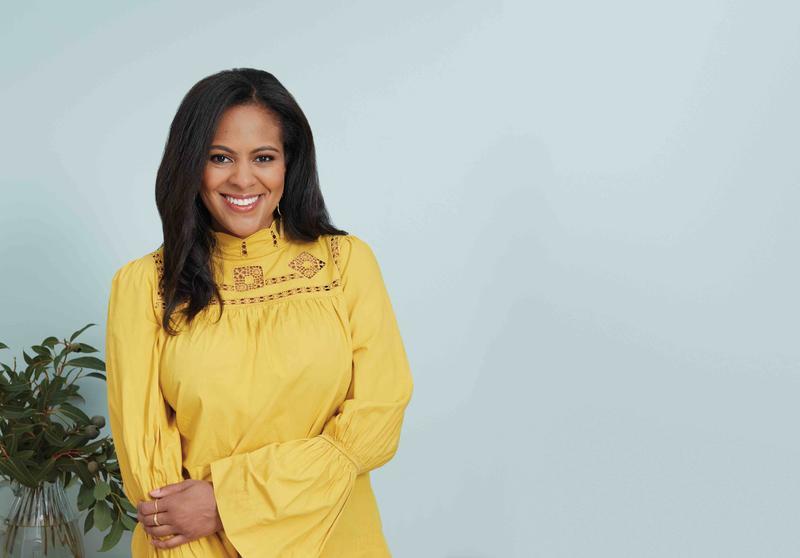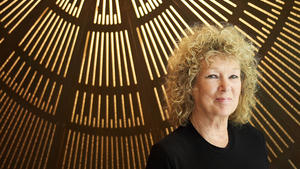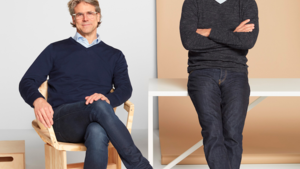Given the chance to describe interior designer Nicole Gibbons using one paint-color name from her new digitally native paint company, one would be pretty spot on in selecting Seize the Gray. The Detroit-born designer has been chasing her business goals—be it at a PR firm, design studio, television series or paint brand—long before the paint dried on her new startup.

Her entry into the design world tracks back to 2008, when she launched a design blog as a creative outlet to “gush about the things [I] loved” while working full-time in public relations. Though the blog began as a simple side hobby, it wasn’t long before friends and subscribers were requesting her design eye, and after a decade in PR, she quit to grow the blog and its newly developed service counterpart, Nicole Gibbons Studio, in 2013.
The communications grad, who shyly admits to having read Napster and Tech Crunch as though they were course texts, had other ambitions in mind too. Her entrepreneurial spirit—and longtime admiration for business mogul Martha Stewart—was piqued by the notion of brand-building.
She developed an on-camera reel, and in 2013, made her television debut on Home Made Simple, a design show on the OWN Network. After three seasons of starring on the show (and also working full-time at Nicole Gibbons Studio), she was ready to add product to her growing brand.
“What I realized was that for a designer, the traditional way of [designing product] is you license your name,” says Gibbons. “You get licensing deals and you build your brand that way. … I wanted more ownership in what I was building.”
Developing the idea was easy. Having followed the growth of millennial startups like Warby Parker and Harry’s, Gibbons wanted to bring the concept into the “sleepy” home category. She decided on paint—more specifically, an e-commerce paint company that solves the pain points often associated with paint purchasing.
“The incumbents who dominate the paint market are 100- to 200-year-old companies who have never changed the way they distribute, create or market their products. And this is 2018,” says Gibbons. “The consumer landscape has shifted.”
By 2017, Gibbons was ready to invest in her idea, by then dubbed Clare. She spent January researching the paint market, realizing that high rates of volume sales, purchasing frequency (in comparison to other home categories), and the high market capitalizations of competitors made for a promising business cocktail. It was a month of attending trade shows, making cold calls to raw suppliers, and meeting with chemical companies.
By spring, she was developing her supply chain architecture, meeting with suppliers and creating a financial model—items she knew she’d need to have in place before shaking the hands of venture capitalists.
 The incumbents who dominate the paint market are 100- to 200-year-old companies who have never changed the way they distribute, create or market their products. And this is 2018. The consumer landscape has shifted.”
The incumbents who dominate the paint market are 100- to 200-year-old companies who have never changed the way they distribute, create or market their products. And this is 2018. The consumer landscape has shifted.”
“By the time I actually went to raise capital, not only did I have all the suppliers for every physical product that we supply today, I had a solid business model around the unit economics and how the business would work, but also a really strong idea for how I would market the brand,” says Gibbons.
Without revenue numbers to show, Gibbons relied on her public relations background to tell a different, more creative story of the company in the fundraising pitch. She scheduled on average five to 10 meetings a week with venture capitalists, taking each “no” as a lesson to better her pitch. Years of television auditions, she says, was good prep work for getting denied.
Just as one of Clare’s paint names suggests, Money Moves. The company came out oversubscribed at $2 million (her goal was $1.6 million), with A-list investors including First Round Capital, Imaginary Ventures and Bullish leading the round. Clare officially launched on July 31.
In this week’s episode of the Business of Home podcast, which is sponsored by Fuigo, Gibbons shares how the paint company is tackling distribution, what design-center tenants could learn from the startup community, and what’s next for Clare.



























